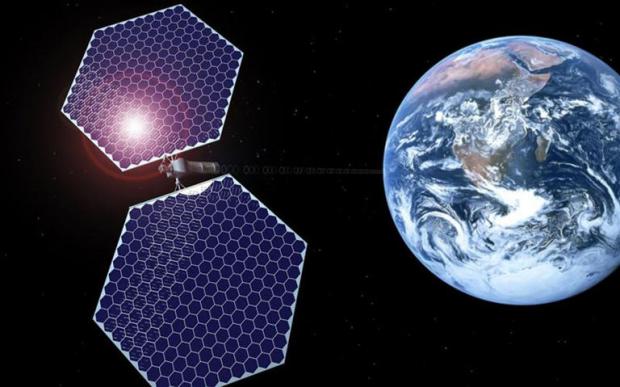
Breaking News
DRINK 1 CUP Before Bed for a Smaller Waist
 Nano-magnets may defeat bone cancer and help you heal
Nano-magnets may defeat bone cancer and help you heal
 Dan Bongino Officially Leaves FBI After One-Year Tenure, Says Time at the Bureau Was...
Dan Bongino Officially Leaves FBI After One-Year Tenure, Says Time at the Bureau Was...
 WATCH: Maduro Speaks as He's Perp Walked Through DEA Headquarters in New York
WATCH: Maduro Speaks as He's Perp Walked Through DEA Headquarters in New York
Top Tech News
 Laser weapons go mobile on US Army small vehicles
Laser weapons go mobile on US Army small vehicles
 EngineAI T800: Born to Disrupt! #EngineAI #robotics #newtechnology #newproduct
EngineAI T800: Born to Disrupt! #EngineAI #robotics #newtechnology #newproduct
 This Silicon Anode Breakthrough Could Mark A Turning Point For EV Batteries [Update]
This Silicon Anode Breakthrough Could Mark A Turning Point For EV Batteries [Update]
 Travel gadget promises to dry and iron your clothes – totally hands-free
Travel gadget promises to dry and iron your clothes – totally hands-free
 Perfect Aircrete, Kitchen Ingredients.
Perfect Aircrete, Kitchen Ingredients.
 Futuristic pixel-raising display lets you feel what's onscreen
Futuristic pixel-raising display lets you feel what's onscreen
 Cutting-Edge Facility Generates Pure Water and Hydrogen Fuel from Seawater for Mere Pennies
Cutting-Edge Facility Generates Pure Water and Hydrogen Fuel from Seawater for Mere Pennies
 This tiny dev board is packed with features for ambitious makers
This tiny dev board is packed with features for ambitious makers
 Scientists Discover Gel to Regrow Tooth Enamel
Scientists Discover Gel to Regrow Tooth Enamel
 Vitamin C and Dandelion Root Killing Cancer Cells -- as Former CDC Director Calls for COVID-19...
Vitamin C and Dandelion Root Killing Cancer Cells -- as Former CDC Director Calls for COVID-19...
Space-based solar power to be beamed to Iceland by 2030

Solar power holds the promise of clean electricity but it has a number of problems. Not the least of these is that the Sun has a nasty habit of setting on a daily basis – if it isn't unavailable already due to bad weather.
Since the 1970s, one serious proposal for overcoming the shortcomings of ground-based solar power is to move the collectors off the Earth and into geosynchronous orbit. At an altitude of 22,236 miles (35,786 km), such a power station would remain fixed in the sky in one spot over the Earth where there would be near-continuous sunlight unfiltered by air, clouds, or dust.
By means of vast arrays of photovoltaic solar panels, sunlight could be converted into electricity and then into microwaves, which would be beamed to equally huge arrays of small receivers back on Earth that would convert the microwaves back into electricity and fed into the grid. If these solar collectors were big enough, only three of these could theoretically supply all the power the Earth needs.
That's theoretically. When you get into the engineering details, things tend not to look so rosy. Such orbiting collectors would need to be many square miles in area and the receiving antenna back on Earth would cover the same area as Manhattan Island. Even with the lightest of construction and the cheapest foreseeable launch costs, the expense of such an orbital plant would be astronomical and require creating an entire space-based manufacturing infrastructure to support it. It would also mean developing a technology that can operate autonomously with minimum human intervention for at least 30 years. Even then, the plant would need continuous maintenance.
To make things worse, the system relies on solar panels that are not the most efficient way to generate electricity and would add many conversions and reconversions from collection to customer delivery – and that delivery is across over 22,000 miles. According to NASA, such space-based power would cost 12 to 80 times as much as ground-based renewables.
Such challenges have not prevented the likes of Caltech from experimenting with beaming power from orbit and Space Solar seems to be confident enough to try for a demonstration plant as part of a commercial venture with Icelandic private climate initiative Transition Labs. In fact, the company claims that it will be able to scale up its demonstrator by 2036 to gigawatt capacity and it is scouting additional receiver sites in Iceland, Canada, and northern Japan.



